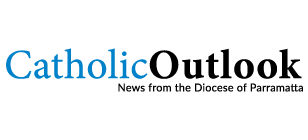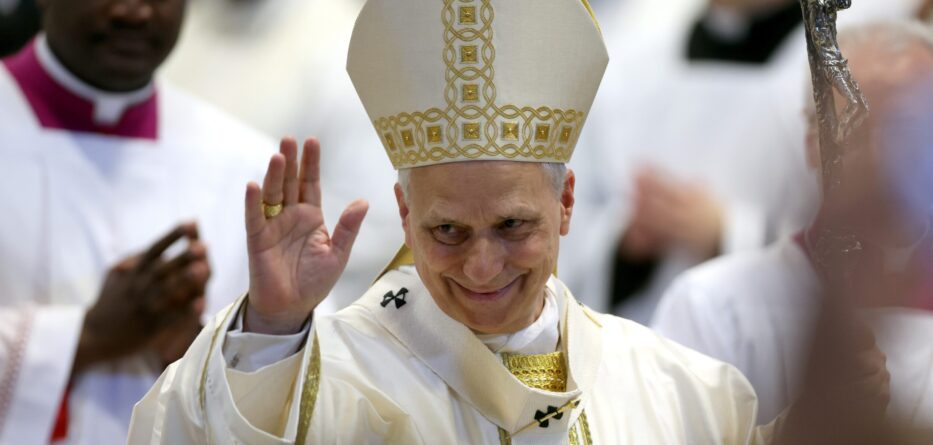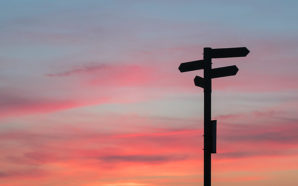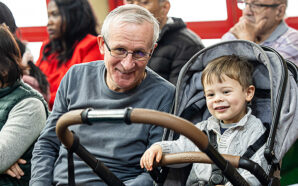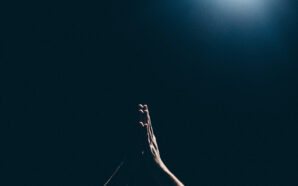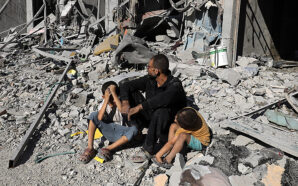The June 29 solemnity of the Holy Apostles Peter and Paul coincided with a symbolic moment in the relationship between the papacy and the global Church: Leo XIV, the first U.S.-born pope, bestowing the pallium on eight fellow American archbishops. Leo’s election is obviously a major event, redrawing the geography of global Catholicism and reconfiguring intercontinental relations between the papacy and continental churches, especially the American church. It could be said that the Chicago River, and not the dreaded Rhine, is flowing into the Tiber: none of the watered-down, accommodationist German Catholicism anti-Vatican II conspiracists once feared, but a kind of American Catholicism not imaginable at the time of the council. Its arrival in Rome is not only an understandable source of pride for American Catholics, but might also be a much-needed unifying element in the U.S. Church.
At the same time, it presents major challenges for Leo, given what’s happening to the country in which he was born, raised, and educated. His election was made possible by the fact that the United States is no longer recognized as the leader of the free world. The papacy of Francis represented a decoupling of Catholicism from the West; the papacy of Leo unfolds when America itself—seeking to become a certain kind of America “again”—is seen as a problem in the West.
Leo came to the papacy three-and-a-half months into Donald Trump’s second presidency. Catholic vice president J. D. Vance has clearly succeeded in establishing himself as the ideological heir of Trumpism, at the expense of the Church to which he belongs. His enthusiastic embrace of anti-immigrant sentiment and full-throated support of the administration’s violent and inhumane deportation regime cannot be squared with Christian values. The president’s executive orders and the actions of his administration aim to remake the United States into something far different than what existed when Robert Prevost was born—or different, at least, than what America back then aspired to or claimed to be. The administration has changed the relationship between the Catholic Church and the state in ways that challenge the exercise of religious freedom in profound ways. As an experienced papal diplomat told me a few weeks ago: “What is happening in the U.S. today reminds me of Cuba.” Making America “great again” is not a response to external threats but rather a campaign against internal “enemies.” One of these is the Catholic Church—the “Body of Christ”: immigrants, the Catholics and non-Catholics the Church serves, its bishops, and ultimately the transnational character of Catholicism which has in the Vatican its most visible and universally recognized symbol.
All of this complicates international relations at large for Leo. The Italian popes elected after 1945 came from an Italian Catholicism that turned away from its past support of fascism, worked to reconstruct democracy, and fought domestic terrorism in the 1970s. John Paul II, the first non-Italian pope in centuries, unembarrassedly presented himself as the “Polish pope” of a Church leading the fight against the Communist regime of his home country. And the German Benedict XVI and Argentine Francis had seen what dictatorships could do to a nation. But Leo’s home country is in a political and constitutional crisis that is already having a terrifying impact on many and augurs badly for many more. His brother bishops in the United States are called to respond to a political and ecclesial emergency. Millions of faithful, especially those affected by changes in the legal regime for residency and citizenship, live in fear for the future—for themselves, for family members, and for the country. Saturday, June 14, provided a remarkable split-screen view of the United States: Leo’s video address to young people gathered at a Chicago stadium; Chicago cardinal Blase Cupich’s much more politically combative remarks to the same audience; Trump’s military parade in Washington D.C.; the “no kings” protests in cities and towns all across the country, drawing millions of people; and the assassinations of a Minnesota state legislator and her husband, plus the wounding of another Minnesota politician and his wife, by an anti-abortion extremist who’d studied at the Christ for the Nations Institute, an influential, nondenominational charismatic Christian school.
In hindsight, it’s clear that the first Trump presidency was not an aberration but the prelude to a turning point in American history that could change the face of the United States for a long time to come. But since May 8, just after Trump weighed in on the conclave by posting an AI-generated photo of himself in papal regalia (far from an innocent prank), the administration seems to have taken a more cautious posture with Leo than it did with Francis. The U.S.-born pope appears to command more respect in American politics, at least for the moment.
In hindsight, it’s clear that the first Trump presidency was not an aberration but the prelude to a turning point in American history.
Leo comes to the papacy at a time when divisions in the U.S. Church have expanded beyond liturgical styles, doctrinal formulations, or pastoral approaches. Now there’s also a split on the state of American democracy and its effects around the world. The history of relations between Catholicism and the United States is one of slow and arduous rapprochement and subsequent inclusion in that political project, with neoimperial overtones alongside promises of an inclusive constitutional democracy. The Second Vatican Council and the 1960s marked a “coming of age” for American Catholics, who believed that America would continue on its democratic trajectory. The last ten years, beginning with the arrival of Trump in office, tell a different story. The religious identity of American Catholics had been anchored in the values of the American political and constitutional order (rule of law, separation of powers, religious freedom, the stamping out of racism), which is now at risk of collapse. Alongside the resurgence of integralist and fundamentalist movements, the Trump-Vance partnership is redefining American Catholicism and influencing the public perception and mission of the Church in the United States and around the world. In this new America, Catholicism asserts its centrality from an ideological perspective, thanks in part to Vance himself, who between February and April gave form and substance (the controversy over ordo amoris) to the clash between MAGA Catholicism and the pontificate of Francis.
In some of his speeches and homilies so far, Leo has sent messages that suggest a continuation of Francis’s February letter to the U.S. bishops—his last political testament—without directly mentioning or addressing America. In his July 13 homily on the parable of the good Samaritan, Leo compared the road that goes down from Jerusalem to Jericho to “the road travelled by all those peoples that are stripped, robbed and pillaged, victims of tyrannical political systems, of an economy that forces them into poverty, and of wars that kill their dreams and their very lives.”
This could have an encouraging effect on the bishops on the front lines of defending American Catholicism as a social and immigrant church. The statements from the USCCB and from individual bishops about Trump’s so-called “big, beautiful bill” are more courageous and direct than what we were hearing at the start of his second term. But there is still a notable lack of unity at the national level. The silence of prominent bishops on the daily campaign of cruelty against immigrants and the climate of fear it’s stoking is remarkable. Prelates know how intimidation works; some are siding with the intimidated, but others are ceding ground to the intimidators.
There are other challenges for the papacy particular to this American moment. Silicon Valley titans, now allied with Trump thanks in part to the vice president, are spearheading a techno-futurist project with parareligious overtones. It seeks to radically restructure humanity and the planet, echoing the authoritarian and totalitarian projects we saw in the last century. And there remain some of the familiar internal Catholic issues. Bishop Joseph Strickland has already accused Leo of doubling down on the “doctrinal erosion” he says was started by Pope Francis. Then there’s Cardinal Raymond Burke, who spoke in June at the Faith & Culture Conference organized by the Latin Mass Society in London, where he revealed that he asked Leo XIV to remove measures restricting the celebration of the traditional Latin Mass in dioceses. Meanwhile, Leo’s reclaiming of some symbols of papal power has enabled him to demonstrate his autonomy from his predecessor, but it has also encouraged those in conservative circles to see the new pope as an ally. Leo XIV will also have to manage the more discreet appeals for the papacy to draw closer to the right-wing American Catholic business community, seen as capable of solving the Vatican’s financial problems.
We’ll see how this all plays out. It would be naïve to expect Leo XIV’s pontificate to emerge as the political opposition to Trumpism. But it would be equally naïve to think that Leo’s public stance on what’s happening in the U.S. won’t affect his credibility as leader of the global Catholic Church. After the interlude of the Biden presidency, American Catholicism hasn’t been able to present itself (especially through its national leaders) as a clear and unified voice in the face of regime change. The moment puts Catholics in a central position to help determine what is meant by “American democracy”—and the extent to which current nationalist and xenophobic dynamics will continue to divide the nation. Their first coming of age overlapped with and was helped by Vatican II. Sixty years on, the situation is fundamentally different, and poses a particular challenge to the pontificate of Leo XIV.
Reproduced with permission by Commonweal.
